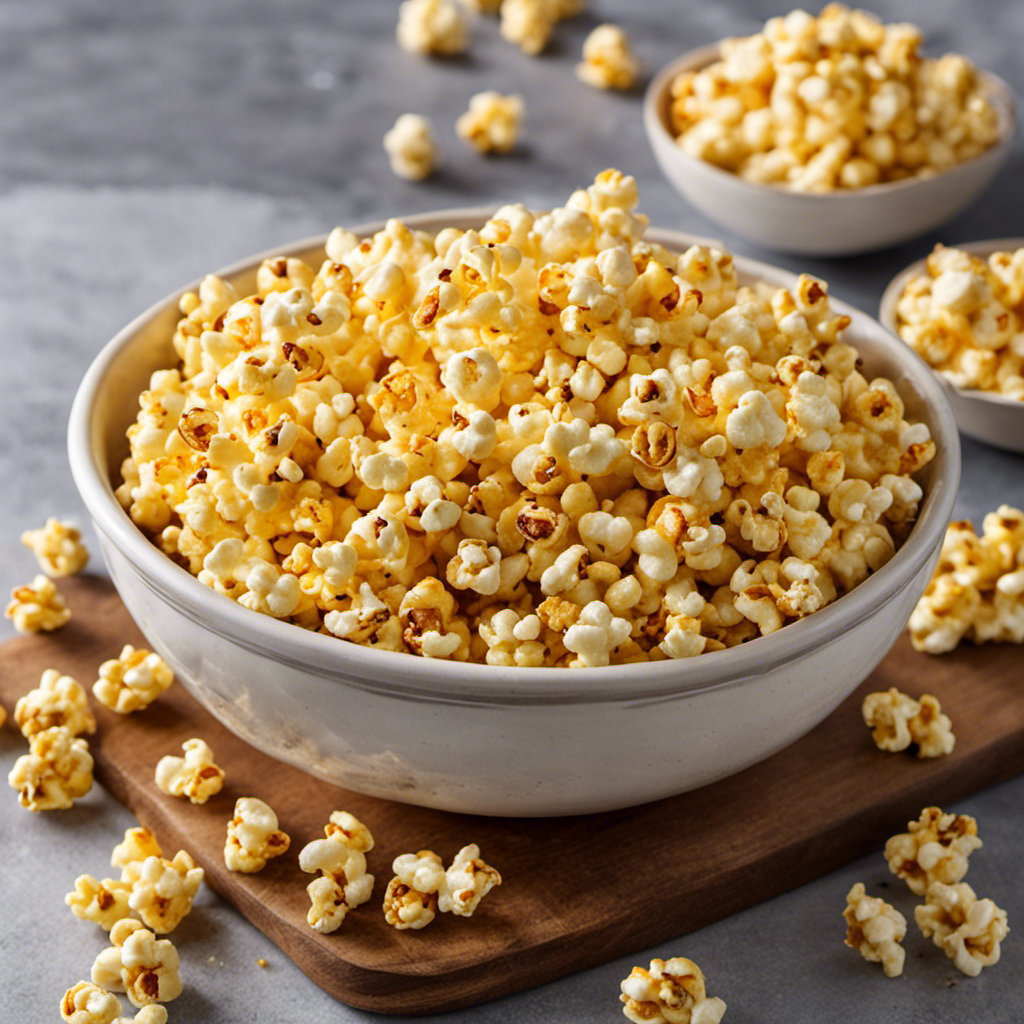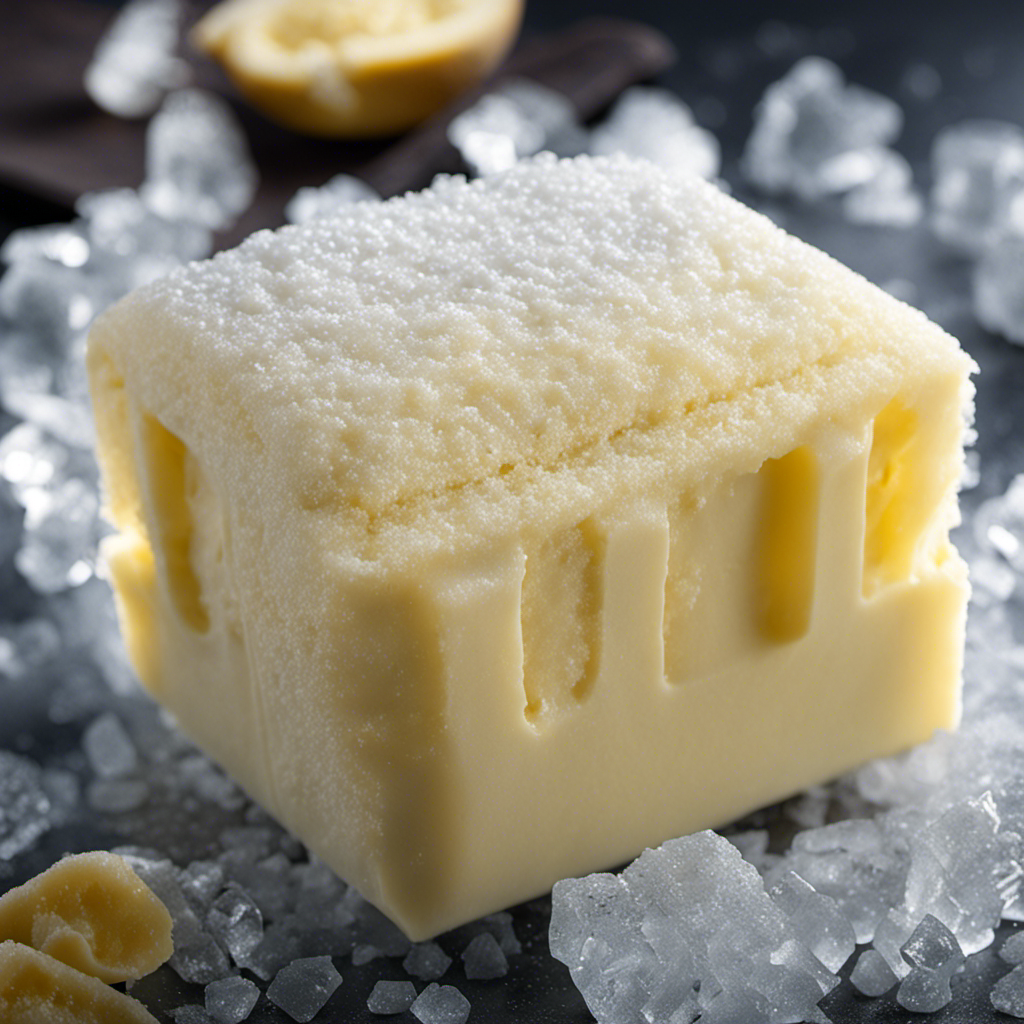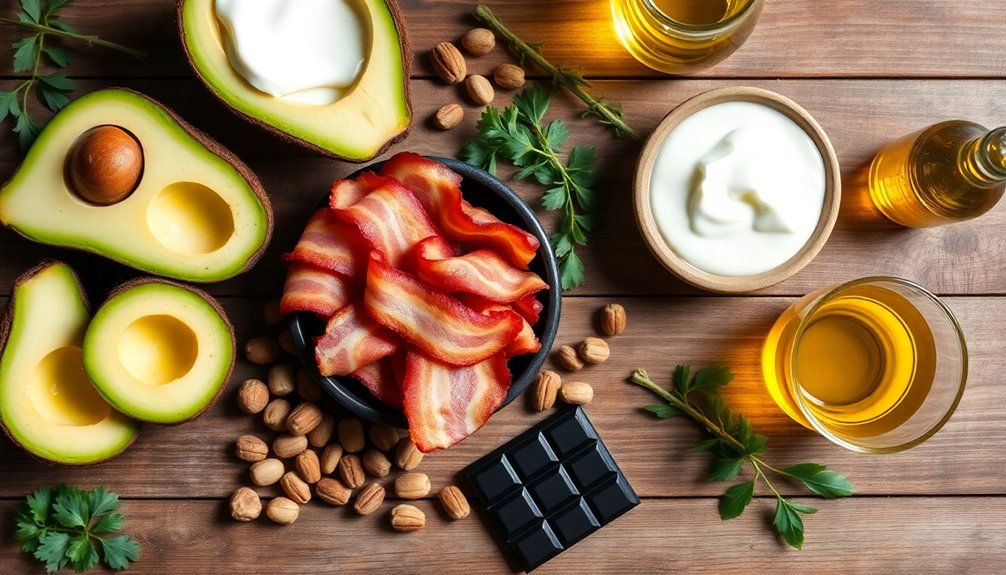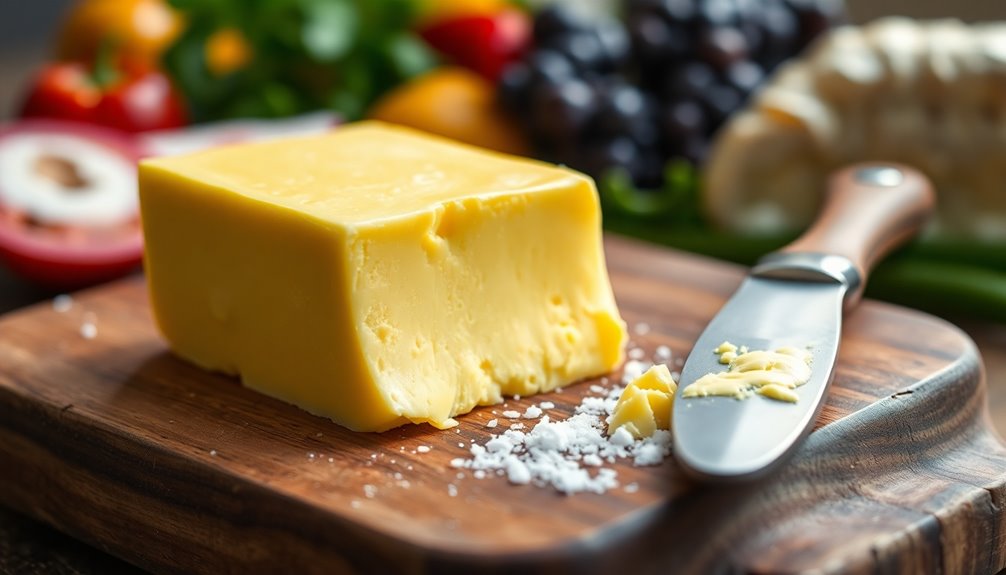As someone who loves popcorn, I am constantly interested in knowing the nutritional content of my go-to snack. Therefore, you can imagine my shock when I realized the high amount of carbs present in butter popcorn!
In this article, we’ll explore the carb content of butter-infused popcorn and help you understand what you’re really consuming. Whether you’re watching your carb intake or simply curious, get ready to dive into the buttery world of popcorn and find out just how many carbs are in that tempting bowl.
Key Takeaways
- Popcorn is a whole grain and provides fiber and essential nutrients.
- On average, a 1-ounce serving of butter popcorn contains about 22-25 grams of carbohydrates.
- Enjoying butter popcorn in moderation and choosing lighter toppings can help manage carb intake.
- Opting for healthier popcorn alternatives, such as air-popped popcorn, can reduce carb content.
The Nutritional Value of Butter Popcorn
I love butter popcorn, but I’m curious about its nutritional value. While butter popcorn may not be the healthiest snack option, it does have some benefits.
First, popcorn is a whole grain, which means it contains fiber and essential nutrients. Additionally, it’s low in calories compared to other snack options.
To make butter popcorn healthier at home, there are a few tips you can follow. First, opt for air-popped popcorn instead of using oil. This reduces the calorie and fat content. Second, instead of using butter, try using a light spray of olive oil and sprinkle some nutritional yeast for a cheesy flavor. Lastly, avoid adding excessive salt or other seasonings high in sodium.
Now, let’s dive into the carbohydrate content in butter popcorn.
Carbohydrate Content in Butter Popcorn
I’m amazed by the amount of carbohydrates found in the delicious buttery popcorn. It’s hard to resist the temptation of this popular movie snack, but it’s important to be mindful of its carb count, especially for those following a low-carb diet. The exact amount of carbs in butter popcorn can vary depending on the brand and serving size, but on average, a 1-ounce serving contains about 22 grams of carbohydrates. While this may seem high, popcorn also offers some health benefits. It is a whole grain, providing fiber and antioxidants. Additionally, it is a low-calorie snack that can help satisfy hunger. Just remember to enjoy it in moderation and choose lighter toppings to keep the carb count in check.
| Nutrient | Amount per 1 oz serving |
|---|---|
| Carbohydrates | 22g |
| Fiber | 4g |
| Protein | 3g |
Counting Carbs in Butter-Flavored Popcorn
Counting the carbohydrates in the butter-flavored movie snack can be a helpful way to make informed choices about my carb intake.
When it comes to butter popcorn, it’s important to be aware of the carb content, especially if you’re following a low-carb or keto diet. A typical serving of butter popcorn contains around 30 grams of carbohydrates.
To manage my carb intake, I try to limit my portion size and opt for healthier popcorn alternatives. Air-popped popcorn is a great option as it’s lower in carbs and calories compared to butter popcorn.
I also enjoy sprinkling nutritional yeast or spices like cinnamon or chili powder on top for added flavor.
Understanding the Carb Content in Butter Popcorn
Knowing the nutritional information of this movie snack can help me make informed choices about my carb intake. When exploring popcorn flavors, it’s important to analyze the fat content as well.
Butter popcorn is a popular choice, but it’s crucial to understand its carb content. While popcorn itself is a whole grain and a good source of fiber, the butter flavoring can increase the fat and carbohydrate content. On average, a one-ounce serving of butter popcorn contains about 25 grams of carbohydrates, with 3 grams of dietary fiber.
It’s worth noting that the fat content can vary depending on the brand and preparation method. Therefore, if I’m watching my carb intake, it’s essential to enjoy butter popcorn in moderation and consider other flavor options that may have lower carb and fat content.
Carbs in Butter-Infused Popcorn: What You Need to Know
When indulging in butter-infused popcorn, it’s important to be aware of the carb content and its potential impact on my diet. While popcorn is generally considered a healthy snack, it’s essential to understand how different flavors and preparations can affect its nutritional value.
Popcorn is a whole grain that’s low in calories and high in fiber, making it a great option for those watching their weight or managing their blood sugar levels. Additionally, popcorn contains antioxidants that can help reduce inflammation and improve overall heart health.
However, when popcorn is butter-infused, the carb content increases significantly. It’s crucial to choose wisely and moderate portions to ensure that the carb content fits within your dietary needs. By opting for healthier toppings or enjoying plain popcorn, you can still enjoy the benefits of eating popcorn while keeping your carb intake in check.
Frequently Asked Questions
Can Popcorn Be Considered a Healthy Snack Option?
Popcorn can definitely be considered a healthy snack option. Air popped popcorn has numerous nutritional benefits. It’s low in calories, high in fiber, and contains vitamins and minerals.
As for flavoring, there are alternatives to butter that can be used. For example, you can try using herbs and spices like garlic powder or nutritional yeast for a savory taste, or cinnamon and honey for a sweet flavor. These options can enhance the taste without adding unnecessary carbs or unhealthy fats.
Is There a Difference in Carbohydrate Content Between Butter-Flavored and Butter-Infused Popcorn?
Well, let me tell you, there’s indeed a difference in the carbohydrate content between butter-flavored and butter-infused popcorn.
When comparing butter popcorn alternatives, it’s important to consider the nutritional differences between butter and oil-based popcorn flavorings.
While butter-flavored popcorn may have a higher carbohydrate content due to added ingredients, butter-infused popcorn tends to have a lower carbohydrate content as it’s made with real butter.
Can Butter Popcorn Be Included in a Low-Carb Diet?
Butter popcorn can be included in a low-carb diet, as long as it’s consumed in moderation. While it does contain some carbohydrates, there are low carb popcorn alternatives available for those who are following a strict low-carb diet.
Popcorn itself is a healthy snack option, as it’s a whole grain and high in fiber. It provides various health benefits, such as improved digestion and lower cholesterol levels.
What Is the Recommended Serving Size for Butter Popcorn?
The recommended serving size for butter popcorn depends on personal dietary needs and goals. It’s important to check the nutritional value of the specific brand or homemade recipe you’re using. When considering the serving size, take into account the number of carbs, fats, and calories in each serving.
It’s always a good idea to consult with a healthcare professional or registered dietitian for personalized advice on portion sizes and incorporating butter popcorn into a low-carb diet.
Are There Any Potential Health Risks Associated With Consuming Butter Popcorn Regularly?
Regular consumption of butter popcorn may pose potential health risks due to its high carbohydrate content. However, it’s important to note that moderation is key.
While butter popcorn may not offer significant health benefits, it does have some nutritional value. It provides a source of energy and contains small amounts of fiber.
To ensure a balanced diet, it’s recommended to consume popcorn in moderation and opt for healthier alternatives when possible.
Conclusion
In conclusion, butter popcorn can be a tasty snack option, but it’s important to be mindful of its carbohydrate content. While the exact number of carbs may vary depending on the brand and serving size, it’s generally a higher-carb choice.
Therefore, if you’re watching your carb intake, it’s wise to enjoy butter popcorn in moderation or opt for lower-carb alternatives. Remember, balance is key when it comes to maintaining a healthy diet.









